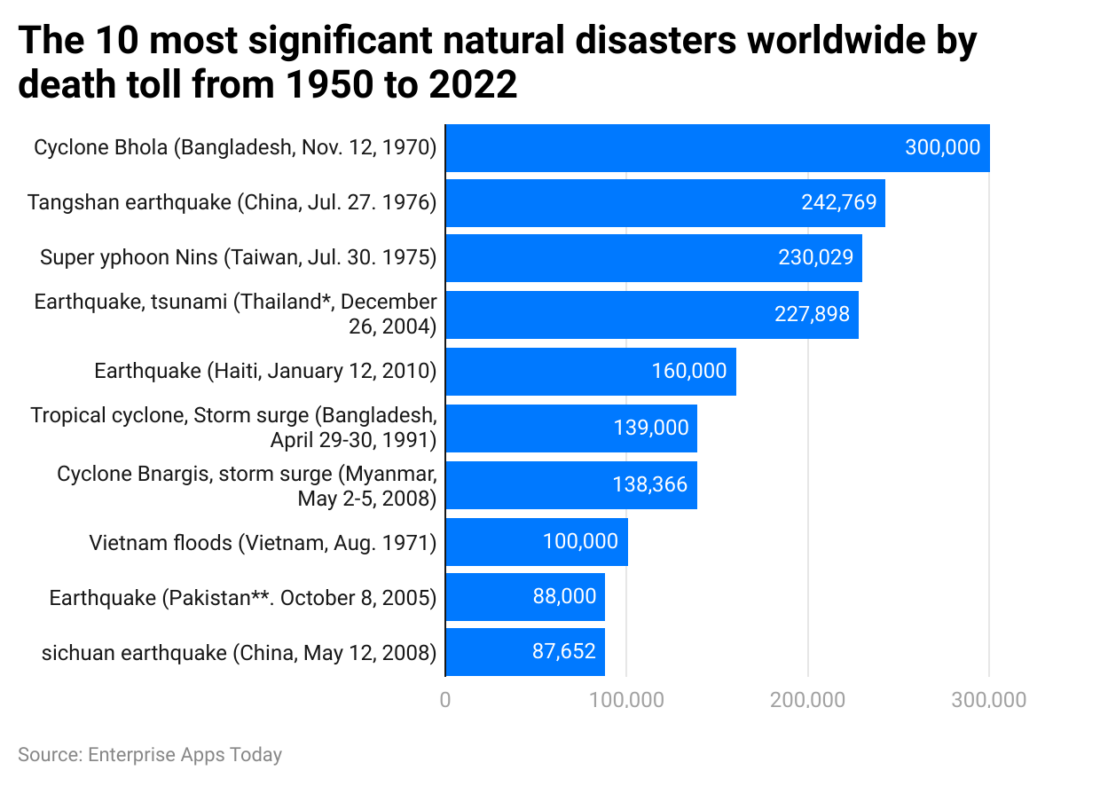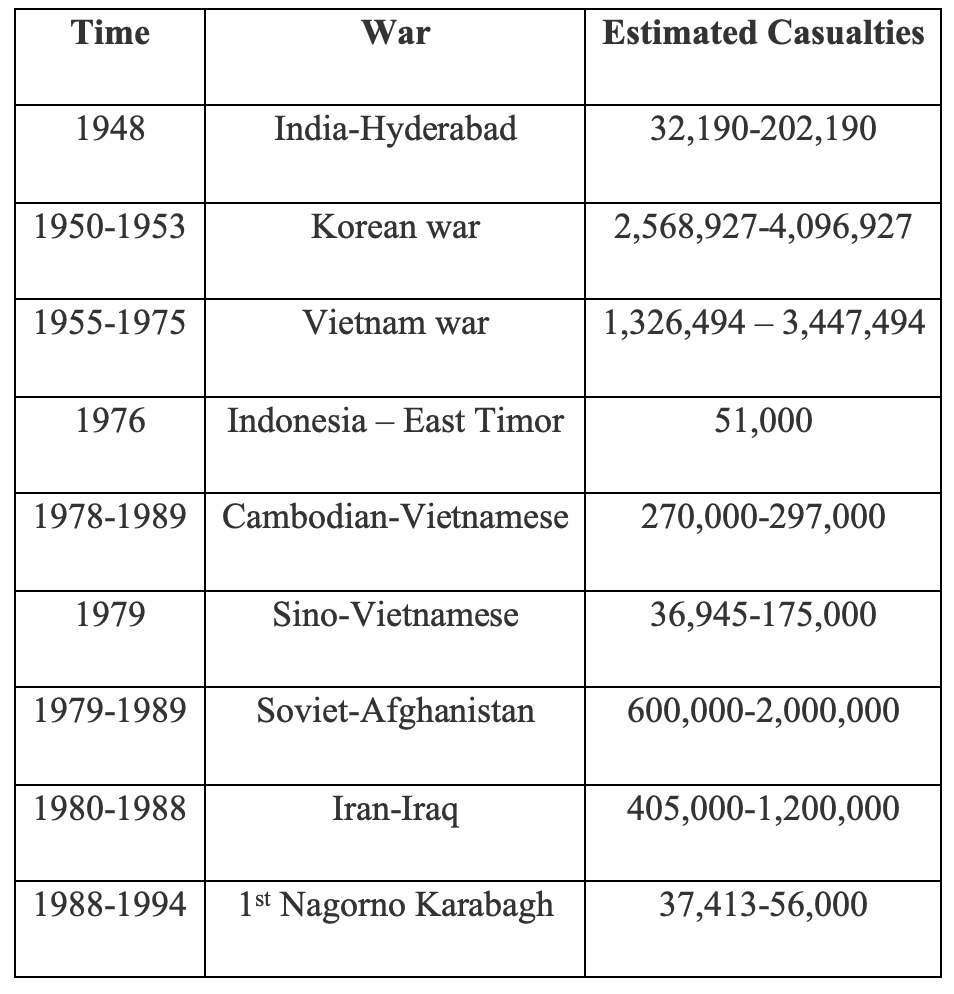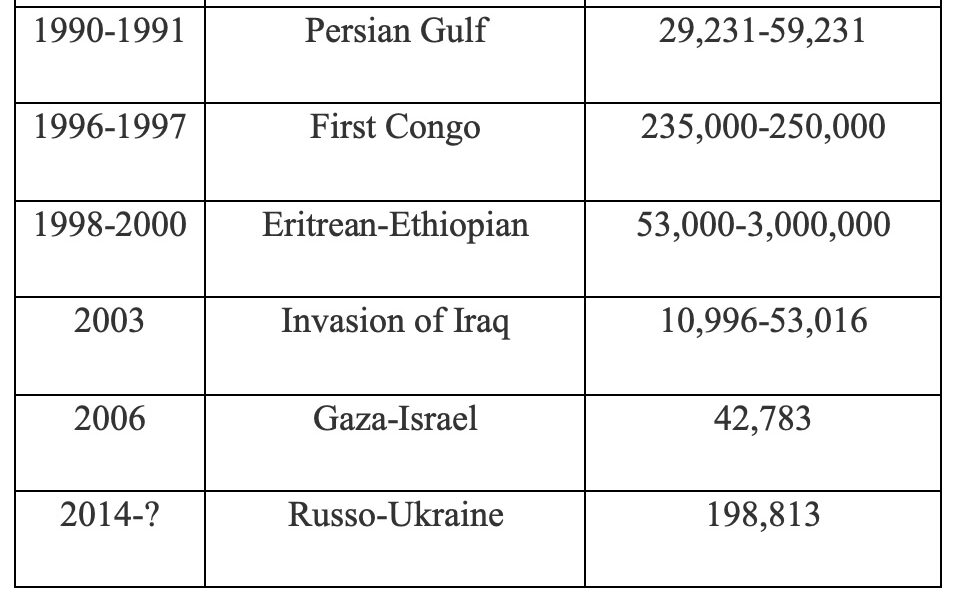
Article IV, Section 4 of the US Constitution provides:
The United States shall guarantee to every State in this Union a Republican Form of Government, and shall protect each of them against Invasion; and on Application of the Legislature, or of the Executive (when the Legislature cannot be convened) against domestic Violence.
The citation is from the US Constitution but there is no doubt in my mind that security is a prime requirement of every sovereign state. The article states that the protection should be provided for all its citizens against “invasion.” It does not specify human or non-human invasions. To my understanding, if a state can do something to alleviate deadly consequences of any sort, it should. Some threats don’t recognize human-created borders, so the “Make America Great Again” policy of letting other countries fend for themselves in this context is folly, and such a government should be replaced. Figure 2 summarizes the death toll of global natural disasters from 1950 to 2022. None of the threats in Figure 2 recognized state borders. Humans cannot do much about earthquakes yet, but the other threats are amplified by climate change, which is an anthropogenic threat.

Figure 2 – The 10 most significant natural disasters worldwide by death toll 1950-2022
All these disasters are events that took place in the past. All are natural, cross-border disasters. The United States is not mentioned in the list but Wikipedia has a separate entry for cross-border disasters in the US. It includes COVID-19 (1,131,819 fatalities), the opioid epidemic (750,000), HIV/AIDS (750,000), two influenza pandemics (226,000), and a variety of floods, hurricanes, and fires that have been amplified through anthropogenic climate change.
Almost all the countries mentioned in Figure 2 are populated developing countries (Taiwan does not fit into this category and China is classified as a middle-income country). Any disaster of that magnitude that hits a developing country triggers mass immigration to safer countries, which, in turn, triggers instability in the rest of the world.
Possible future global disasters were discussed in two previous blogs:
The general trend in “What Are We Trying to Teach Our Children?” (June 11, 2024) :
Humanity is in the middle of at least 5 existential transitions; all of these started around WWII. They include climate change, nuclear energy, declining fertility, global electrification, and digitization. These transitions started around the time that I was born, but they will hopefully last (if some of them do not lead to extinction in the meantime) at least through the lifetime of my grandchildren (I call this time “now” in some of my writing). For the purpose of this blog, I will now change the word “hopefully” to probably.
And specific numbers in “Back to Self-Inflicted Genocide” (March 25, 2025):
A global all-out nuclear war between the United States and Russia with over four thousand 100-kiloton nuclear warheads would lead, at minimum, to 360 million quick deaths.* That’s about 30 million people more than the entire US population.
360,000,000
The Cretaceous mass extinction event occurred 66 million years ago, killing 78% of all species, including the remaining non-avian dinosaurs. This was most likely caused by an asteroid hitting the Earth in what is now Mexico, potentially compounded by ongoing flood volcanism in what is now India.
Unabated climate change will cause 3.4 million deaths per year by the end of the Century, new data presented to COP27 today shows. Health-related deaths of the over-65s will increase by 1,540%, and in India alone there will be 1 million additional heat-related deaths by 2090, if no action to limit warming is taken, the data shows.
One can find comparisons of global casualties from interstate wars since 1945 in Table 1.
Table 1 – Interstate wars since 1945 with more than 50,000 estimated casualties


It’s obvious from this that the number of casualties in interstate wars is higher than in cross-border disasters. However, a closer look at Table 1 reveals that most interstate wars take place in areas that were once held under colonial rule. These are generally developing countries; meanwhile, the developed countries that could provide the most help are not taking part in most of them.
The next blog will focus on the tools that sovereign countries have and existing attempts to increase the set of tools to fight global threats.

This is a really important discussion point. Linking Article IV, Section 4 of the US Constitution to the broader global threats of climate change is insightful. Your point about the ambiguity of “invasion” truly highlights the limitations of a purely nationalistic approach to issues like climate change-related disasters. While the Constitution wasn’t directly conceived with something like global warming in mind, its underlying principle of security and protection for citizens should logically extend to these modern, borderless threats. The rising death tolls from extreme weather events vividly show the cost of neglecting global cooperation on this issue. The “Make America Great Again” approach, in this context, really does seem like a counterproductive stance when so many problems call for collaboration to stand a chance of survival .